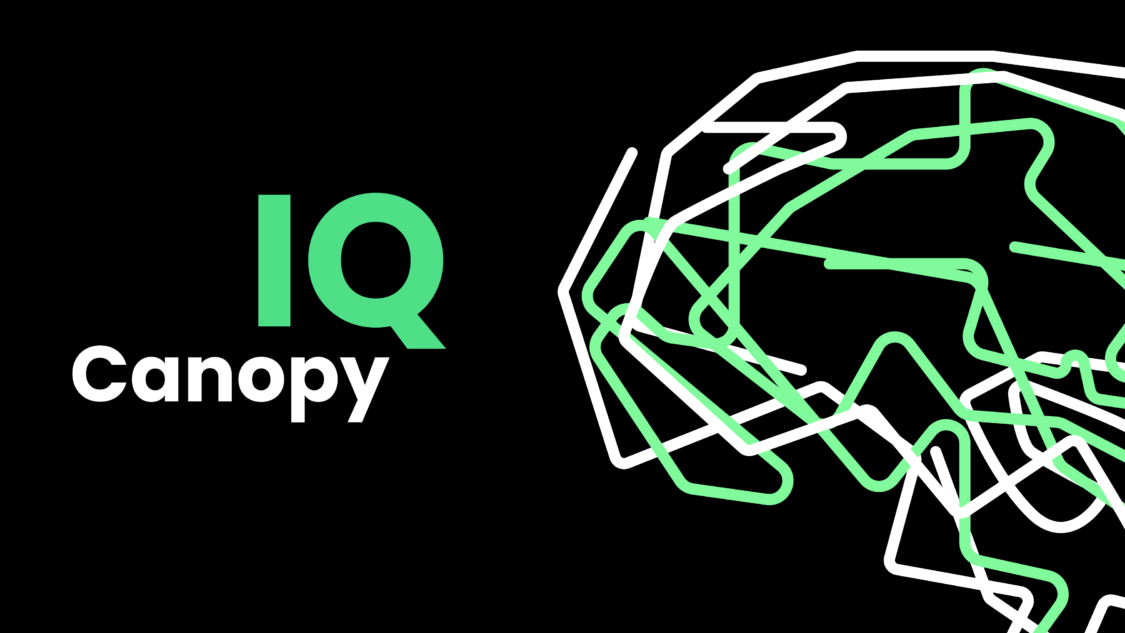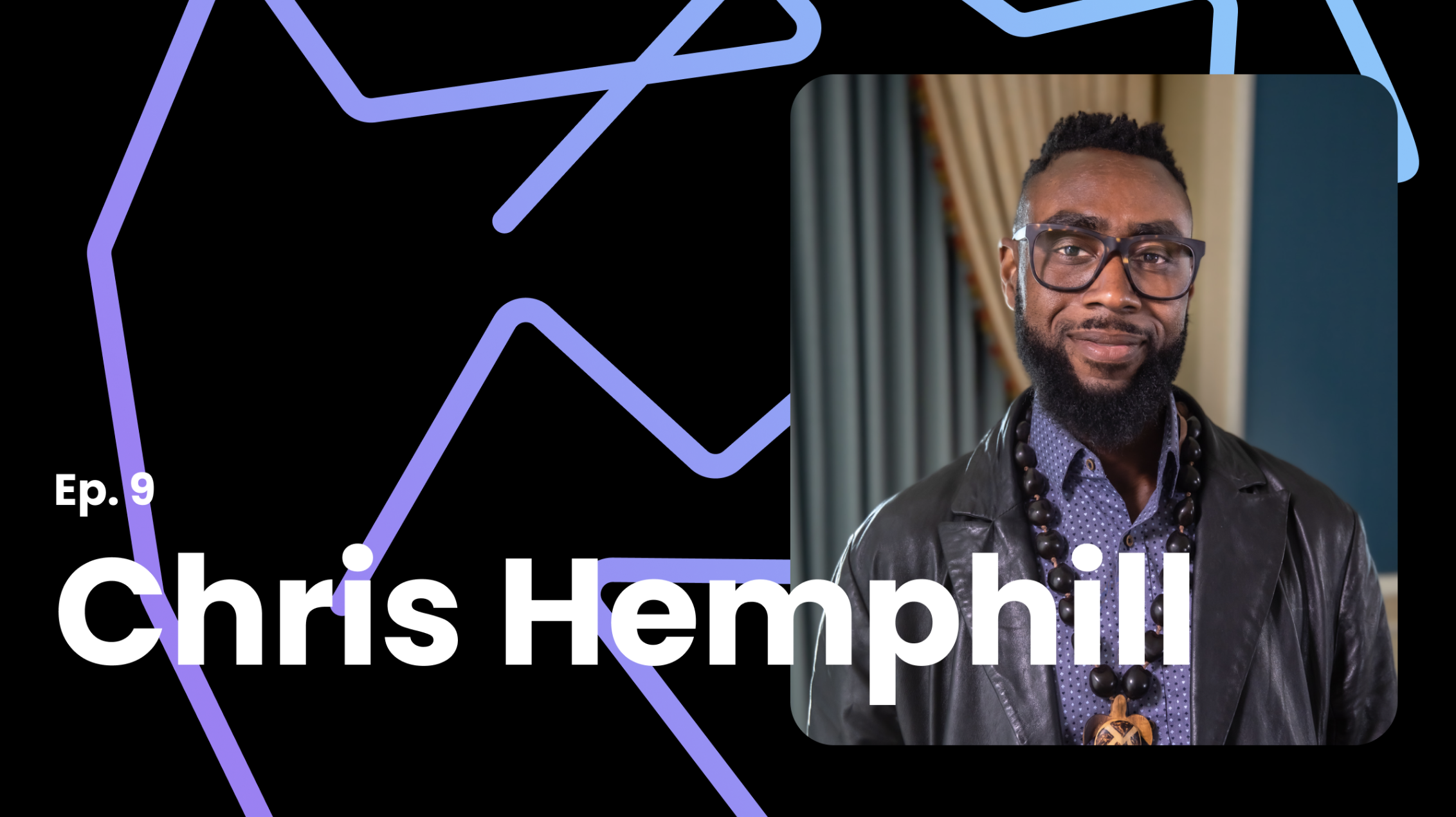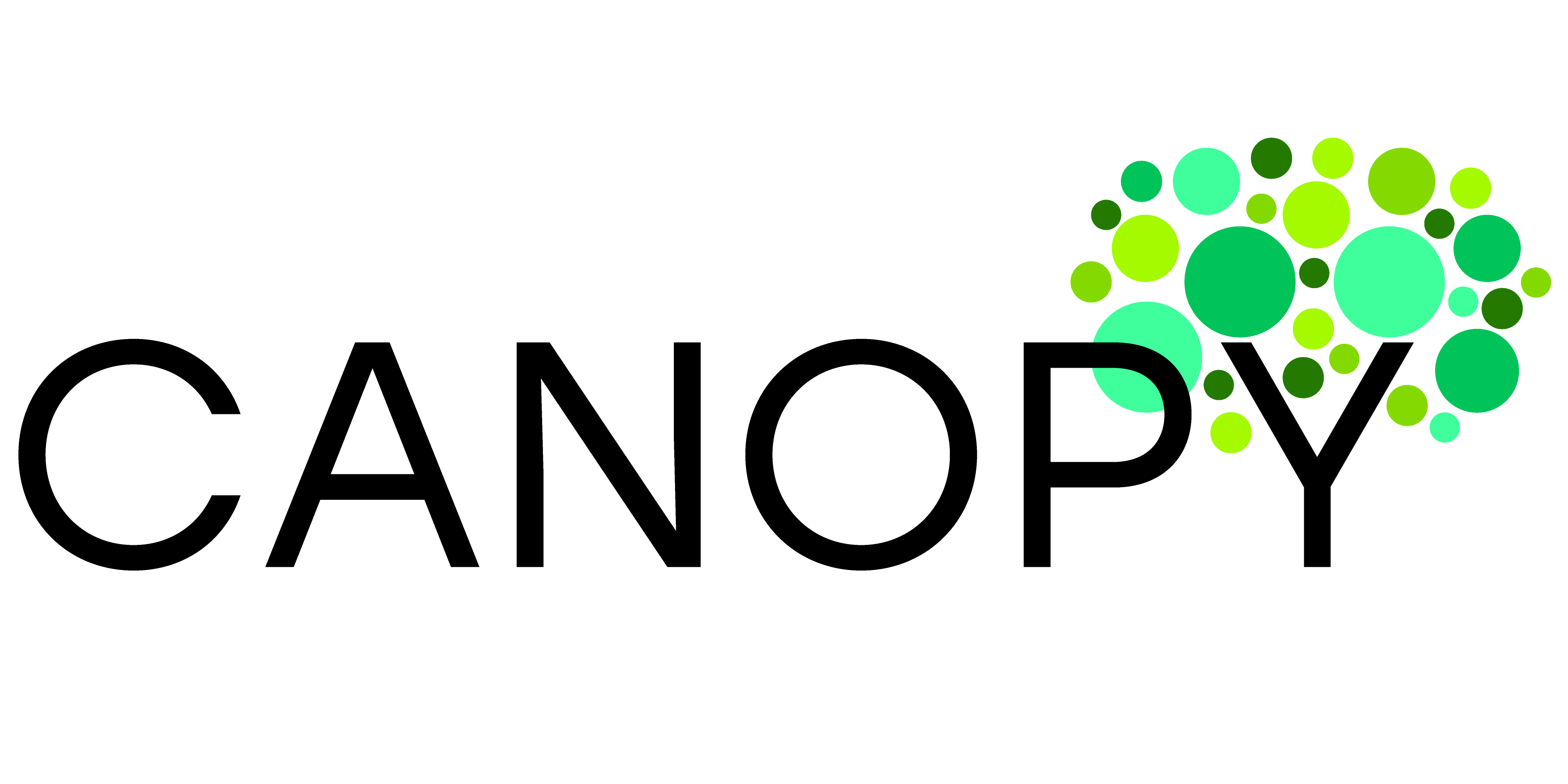- Blog
- An Interview with Chris Hemphill, AI Strategy in Digital Mental Health, NYU McSilver Institute Fellow
Subscribe to our
email list
Stay updated on industry
news and ad tech insights

Canopy IQ Podcast
Welcome to the Canopy IQ Podcast. Tune in as expert voices and special guests from a wide range of disciplines help guide our understanding of the ways business intelligence, branding, machine learning and digital advertising are reshaping AgeTech in the 21st century.
Read More

Argentum 2023
Canopy founder Bobby Youngs will participate in Argentum’s “Speed to Lead is Key” HR Recruiting Panel on May 9th. More info coming soon!
Read More

The Senior Living Social Media Playbook
Take the guesswork out of your social media campaign strategy with this downloadable guide
Read More
An Interview with Chris Hemphill, AI Strategy in Digital Mental Health, NYU McSilver Institute Fellow

Adam Wilensky: Welcome to the Canopy IQ podcast. In this episode, we’re joined by Chris Hemphill, Senior Director of Commercial Intelligence at Woebot Health and a leading voice in AI strategy in digital mental health. They’re also an NYU McSilver Institute Fellow-in-Residence, and a widely sought-after speaker and panelist. In summary, Chris is a visionary in the truest sense of the word. Welcome, Chris.
The first time I got to see you present was at SMASH back in 2021. For anyone unfamiliar with SMASH, it’s essentially the leading senior living, sales and marketing conference in the US. Since those days, Chris has been on my radar pretty much constantly. You have been busy.
Chris Hemphill: It’s not work if you enjoy what you’re doing and if you feel that there’s an important need to do stuff. Yes, just try to stay a little active.
Adam Wilensky: You once mentioned that health systems have gone from having a dearth of data to having too much data. I’d love to have you elaborate on that perspective, especially as it pertains to the way AI can help us manage information flows and potentially avoid bottleneck.
Chris Hemphill: When I say too much data, what I’m really saying is that there is an overwhelming amount of stuff that’s floating around, that people may or may not know how to interpret. Let’s take an EMR system that has 95,000 different tables holding hundreds of thousands, if not millions, of different records, of examples of times that people came in to address a care concern or pay a bill or what have you. The scenario is that there’s so many potential use cases there that might be ignored just because of teams that are overwhelmed by the amount of data that are available.
Sometimes people have a perspective like, “Hey, let’s collect all the data we can, put it in a data lake, and somehow step two, question mark. Step three, profit, right?” Rather than that kind of just bring in everything mentality, really when I say there’s too much data, what I’m really saying is that we can do a lot better by identifying the use cases that are important to us, and identifying the predictions that we might need to make to aid those use cases, and then identifying the data sources that we should bring in to satisfy those needs.
Rather than this whole idea of we need all the data we can, rather it’s getting together, understanding how these methods might be able to help with enabling the strategy that a health system has, and then going out and identifying the data sources, and developing the models, and things like that appropriately.
Adam Wilensky: Right. Do you have any advice for digital marketers out there, or even just folks who are having to analyze data specifically? What are the challenges that people are faced with these days? I realize this is a very broad question, but we can home in on certain things. I’m going back to some of the information you shared at SMASH, which was really there’s a danger in over-reliance on marketing dashboards.
Chris Hemphill: Yes, there’s a lot to chew on with that question because there are so many different domains where we’re using predictive methods to make decisions or generate text or images, or in the digital marketer and healthcare perspective, make predictions about how to form your audience. There’s so much stuff out there. Everything goes back to the strategy that an organization might have.
Let’s say that an organization is focused on engaging people with potential heart conditions in preventive care that will permit them to live a safer and happier life at home, rather than showing up when that level of need has become acute for, let’s call it heart conditions. I think I said that earlier, but either way.
We have our overall strategy that that doesn’t go away. We always want to start from the perspective of what’s the organization trying to do, how are we trying to enable a better life for our patients? Then we work backwards from there. The types of predictions that we’d want to make are who are the people that are most likely to have these conditions or to show up in these emergency scenarios? Once we’ve identified what we want to predict from this AI system or mechanism, then we go back to a question of the types of data that we need to enable those predictions across that whole pipeline.
We also want to ask questions about– based on the data sources that we have, let’s say that it’s our primary data, and based on the types of predictions that we’re making, what are the biases that creep up within this? Where is there an imbalance? Do we have a significantly higher white population than other races? Are the predictions that we have skewed based on that? How do we adjust for that? I like the idea of people starting from their business context, ethical context so the problem that they’re trying to solve, and then using data science to help fill that in.
Adam Wilensky: Yes, I wanted to get into Woebot, and for the audience members who aren’t familiar with it, first, if you could start, by sharing what Woebot Health is, how it originated, and really tackle some of the social issues that the company is meeting.
Chris Hemphill: Fantastic, and appreciate the question. Woebot itself is a chatbot that’s designed to help with mental health needs, especially in a time that you have needs where you might not be able to reach a clinician. There’s many reasons you might not be able to reach clinicians. There are access issues, there are cost issues. There are all kinds of barriers. There’s stigmatization, like the feeling that something’s wrong, but you don’t want to talk with somebody about it because of the fear of being judged. All types of reasons that someone might not have that access to a clinician. This is, again, a chatbot, capitalized bot because I like to emphasize that you’re not talking to a human in the background. I just want to make that very clear.
It’s trained on evidence-based principles around cognitive behavioral therapy. There’s a branch of therapy that has a lot of evidence, a lot of backing, and also plays well to kind of automated scenarios like Woebot is able to offer. It’s using that body of science to inform the types of conversations that it has with the user to help them with their needs.
Adam Wilensky: Yes, I think we’re clearly in the middle of a mental health crisis. The statistics around teenagers alone are deeply troubling. We like to focus at Canopy IQ on really thinking about seniors, aging community, and how there’s an interplay between age tech and ways to alleviate some of the challenges they’re facing. 10,000 to 11,000 seniors retire every single day. Some of them are going to move into communities where they have the good fortune of interacting with their peers, but literally tens of millions of others are aging in place, and they’re going to face years of social and physical isolation.
You shared an article from Taft Parsons that I’d like to reference. Mr. Parsons is the Chief Psychiatric Officer for CVS Health, and he stated, and I quote, “There’s also the isolation and loneliness that can come with age, which can have significant adverse effects on mental and physical health.” It’s a powerful statement.
Chris Hemphill: I like the fact that he– Much respect to Dr. Taft, by the way, and thank you for that. I like the ongoing, continued conversation that as we start to unlift the veil and destigmatize certain areas of mental health, we’re starting to acknowledge the impact that it has on the whole person perspective.
In that quote, he bridges the gap between mental health and physical health. There are bodies of work and studies around addressing mental health issues or in or closer to primary care settings or alongside things like diabetes management that show that you drive better outcomes for those physical health issues by addressing the unaddressed mental health concerns.
Adam Wilensky: I’d love to share some of your content with our audience. You’ve got something called the Meeting of the Minds podcast series. What are you up to in terms of the content space? Where can people find your content, and what’s going on with you for the remainder of this year?
Chris Hemphill: The content space is super fun to me. When I started at Woebot last year in 2022, I was doing a podcast with the previous company. I worked for Actium Health, and I thought, gosh, I just want to focus on data science 100% and not produce content. It takes a lot of work and a lot of effort, and you just read the name of the podcast, Meeting of the Minds that eventually started coming out of Woebot. I feel like anybody who is in the audience and getting into content production, just letting you know that if you stick with it for a few months or a couple of years, you’ll never get out of it. It’ll always come back to you, just letting you know.
The remainder of the year, Meeting of the Minds is the series that we have that focuses on the intersection of healthcare strategy, digital health, and mental health. The basic idea is that there’s an overwhelming amount of regulation, innovation, all kinds of things happening. We just want to help people get a good footing on where they might be able to start on issues around things like value-based care, coordinated care, and behavioral health integration, just help with ideas on where to start by talking to folks who are out there doing the movement and shaken, people that I’m very honored to talk to.
Just use those conversations to get some thinking going. Meeting of the Minds, as far as availability, right now, Meeting of the Minds is on YouTube. It’s available as a YouTube podcast. If you go to Woebot Health’s YouTube channel, then you can go to our podcast section, and see all the episodes.
Adam Wilensky: Terrific. Without giving up any secret sauce, are there AI content tools that you use and like to share with our audience?
Chris Hemphill: How about stuff that’s outside of work, but easily accessible that you don’t have to know how to code to use it? From a design perspective, Canva is a really good show of a consumer-grade tool that brings in things like image generation and computer vision and things like that to make it really easy to design presentations and thumbnails and stuff like that. I just really like what that company is has been doing to prevent people from needing Photoshop. At the same time, generating images within it. Let’s say that you can’t find what you need off of the typical stock photo rounds. Within that platform, you can play around and generate some images from that.
Let’s have some more fun with this. With ChatGPT, which everybody knows about, some portion of the audience might have heard about this internal memo that came from Google, where they said, we don’t really have a competitive advantage versus the open source community. That’s something that I would like for people to keep an eye on, is basically open source versions of Open AI and ChatGPT, but they’re called Open AI, but they’re very closed. They’re not transparent.
At the same time, you have a growing open source community that is creating tools that I would say that they don’t necessarily perform at par with ChatGPT right now in terms of getting what you want out of the model and interrogating it, but just keep an eye on things like hugging face. They just release something, hugging chat, very consumer-grade, very easy to use. I’d just like for people to keep an eye on things and tinker cautiously.
There’s one thing that I would hope that people can do after this is to read a paper called “On the Dangers of Stochastic Parrots” by Dr. Margaret Mitchell, Dr. Emily Bender, and Dr. Timnit Gebru. That paper came out back in 2021. It basically talks about the dangers of large language models being used in an unchecked manner and the dangers of how people perceive their outputs. Because a major component, when I said tinker cautiously, it’s understanding what you’re doing and the background behind what’s actually happening with these models to inform how you use the content that comes out of them.
That’s a paper that it’s written in an accessible way. It’s not for data scientists only. I just think that they did a really good job in outlining some of the dangers. They didn’t write this as some prescient thing. They weren’t intending to make a prediction. They were intending to stop a potential problem, but when you’re reading it, it will feel like predictions have been made.
Adam Wilensky: Dr. Gebru, correct me if I’m wrong, she was with Google, right?
Chris Hemphill: That’s correct. Now you’re getting deeper into my pessimism. When you have these, I guess, these big wig groups getting together, like, oh, these major leaders and heads of state or what have you, I have no idea, but it seems those people target chief executive officers of large entrenched companies to lean on for advice. If they’re getting their advice on ethics and safety from Google, who fired Dr. Timnit and other people that were involved with creating a paper that highlighted the very ethical issues and challenges that we’re dealing with today, I’m like, “man, I hear about these people. I take it with a massive grain of salt until I’ve really inspected what the context is and who is in that room.”
Adam Wilensky: I appreciate that. I think for me, the key takeaway is to be wary of clickbait, do the research, be open-minded about it. I tend to think of these platforms as force multipliers, at least in marketing. I see great value there. I, for one, I’m fascinated and thrilled by the future unfolding in front of us.
Hey, Chris, such a pleasure to have you on. You’re just a brilliant guy, and you’re super accessible. I’ve always thoroughly enjoyed our conversation, so I appreciate the time. I know you’re in real demand. Everybody wants to talk to you, so it means a lot that you stopped by and shared your insights with our audience.
Learn about High Potential Visitor tracking and the
Canopy advantage for your next Programmatic Display or
Geofencing campaigns.
Get in touch
Canopy advantage for your next Programmatic Display or
Geofencing campaigns.
Get in touch today (704) 396-5525 | info@canopyadco.com







